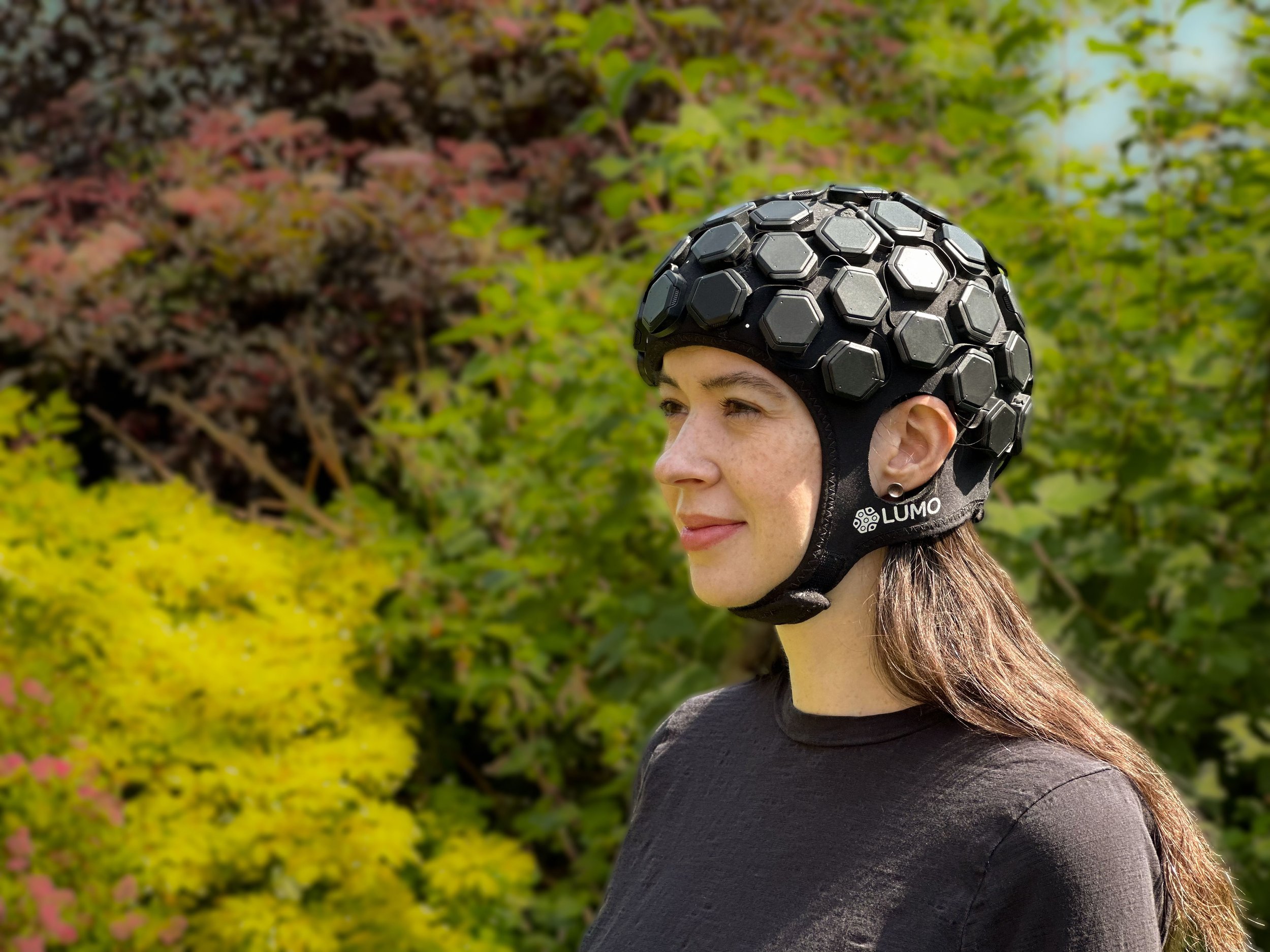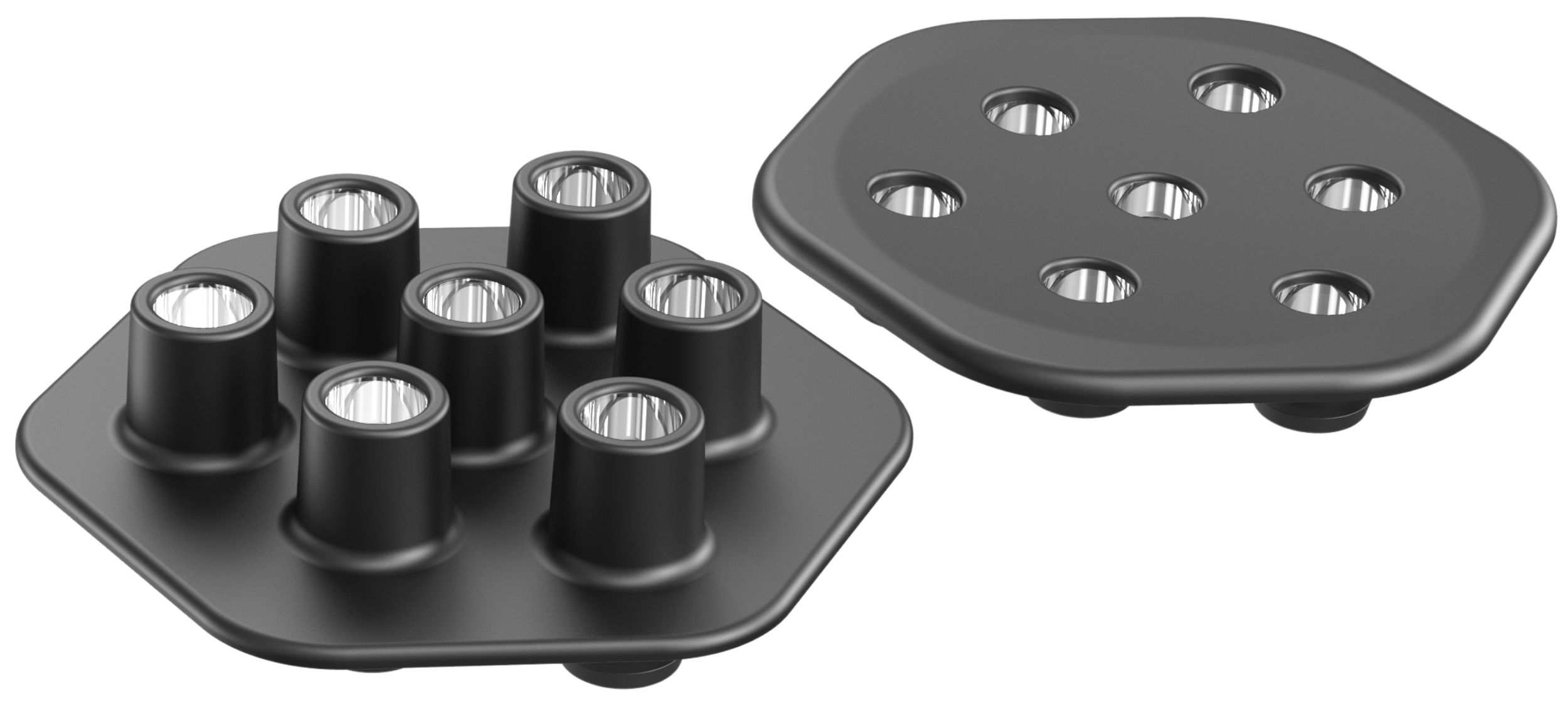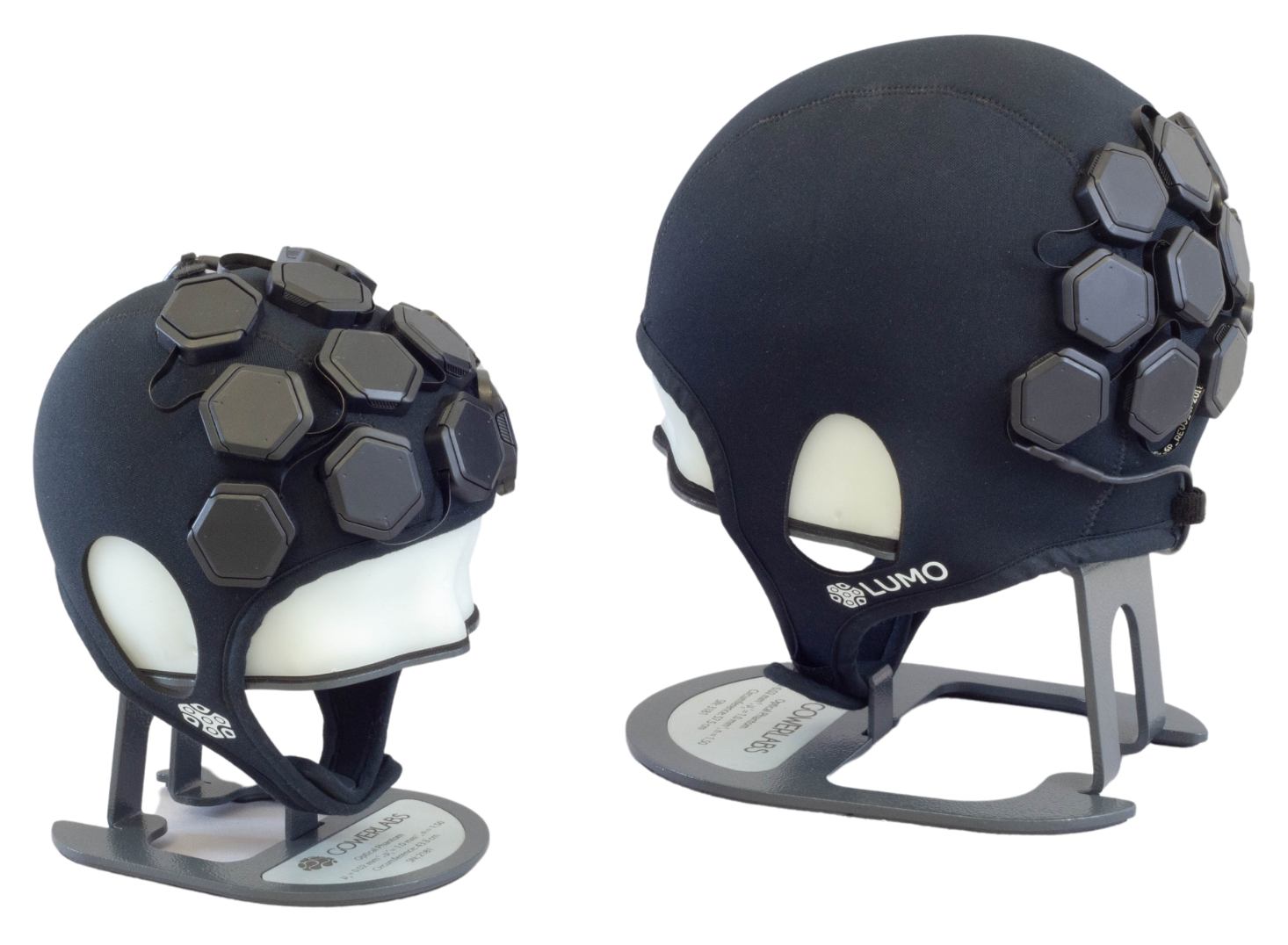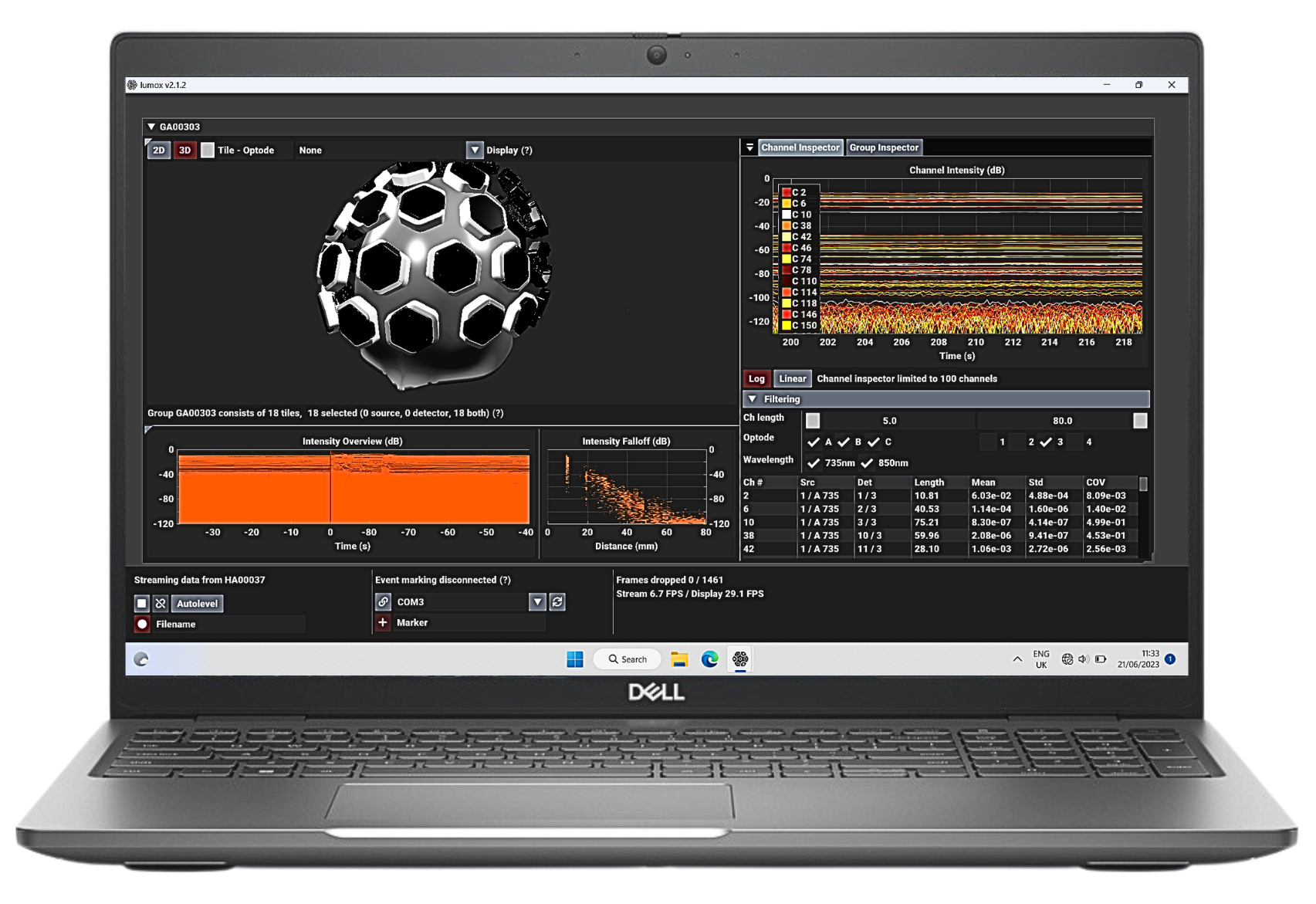
What is LUMO?
LUMO is a high density functional near-infrared spectroscopy (fNIRS) system, capable of diffuse optical tomography (DOT). LUMO provides continuous, high-density multi-distance sampling, reducing false positives with its inherent short-separation channels.
Lightweight and wearable, LUMO requires no optical fibres and is suitable for all ages and environments.
The flexible configuration allows you to instantly switch between different caps and arrays, whilst the unique scalable design allows you to upgrade your LUMO as your research needs change.
How does LUMO work?
LUMO’s ground-breaking modular design consists of independent hexagonal sensor tiles that can be easily connected into any cap at any location to form a high-density array.
Scroll down or click below to read more about each element of LUMO.

The heart of LUMO is the tile: a hexagonal sensor module that houses three sources and four detectors of near-infrared light.
Enabling measurements both within and across tiles, up to 48 fNIRS channels can be obtained using just two LUMO tiles.
Each tile slots into a dock, which are already secured to the cap in your chosen array. Tiles are designed to be inserted into any dock, making array configuration simple and fast.
The docks are connected together using an innovative flexible printed circuit design that allows the cap to stretch and accommodate different head shapes.
Light guides are inserted into the base of the docks, helping to comb through hair and make contact with the scalp. All light guides can easily be removed for cleaning or disinfecting and are completely interchangeable.
Two different types of light guides are available to optimise coupling for different hair types and populations.
Each LUMO cap is made from flexible, high-quality neoprene and is designed to ensure maximum subject comfort without sacrificing durability.
Bespoke caps with custom array designs are made to order, exactly to your specifications. Available in all sizes from infant to adult, with cortical coverage ranging from specific regions of interest up to whole head.
Bespoke acquisition software
Monitor channel quality and channel count in real time. Filter noisy channels with the click of a button, and easily export files for analysis.
Key features of the tile
3 dual-wavelength sources and 4 detectors per tile
Anti light-piping design
High-quality optical filters to maximise ambient light rejection
Ergonomic features making cap connection simple and fast
Intra-tile measurements at 10 mm and 20 mm separation, cross-tile measurements up to 50 mm
Designed to work with 3D positioning systems
Lightweight - less than 6 g
Key features of the cap
Made from flexible, high-quality neoprene
Ergonomic design to ensure subject comfort
Adjustable chin strap to align correctly to the head
Velcro cable strain relief
10-10 positioning markers
Connection via a single cable
Customisable dock layouts
Available in a range of sizes from infant to adult
LUMO: beyond fNIRS
By allowing measurement channels to be formed from a wide range of source-detector distances across multiple tiles, LUMO provides consistent, even coverage of the brain. With LUMO you can be confident that you will not miss an area of the cortex because of sparse, uneven sampling.
Left: a typical optical fibre array consisting of 10 source and 10 detector locations arranged in a grid design to provide 30 fNIRS channels all with a separation of 30 mm.
Right: the 12-tile LUMO prefrontal array provides more than 400 fNIRS channels with separations in the range 10 to 40 mm. LUMO provides an average cortical sensitivity 100x that of traditional fNIRS.
High-density sampling has been extensively demonstrated to provide more reliable measurements of brain function than traditional fNIRS approaches. Systems that only measure at one distance (e.g. 30 mm) are highly susceptible to signal contamination arising from the scalp.
LUMO provides multiple short-separation channels for every source and detector, which allows the scalp signal to be detected, isolated, and removed. Only with high-density sampling can users be confident that the signal they record is truly from the brain.
Why choose LUMO?
fNIRS has been gaining traction among neuroscientists, doctors, and psychologists as a promising brain imaging technology. However, the application of fNIRS technology has been limited by low image resolution, uneven brain sensitivity, and the need to apply bulky optical fibres to the scalp of every subject.
LUMO changes this.
Watch our video to learn more, and contact us for a quote.











